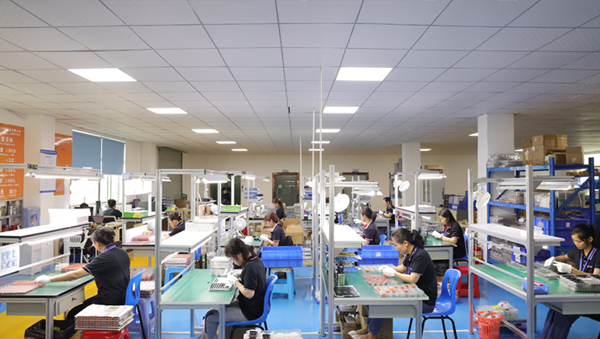15 years one-stop China custom CNC machining parts factory

Hey there I’m VMT Sam!
With 25 years of CNC machining experience we are committed to helping clients overcome 10000 complex part-processing challenges all to contribute to a better life through intelligent manufacturing. Contact us now
 131 |
Published by VMT at Jan 13 2024
131 |
Published by VMT at Jan 13 2024
Introduction:
In the manufacturing industry, CNC machining technology is widely applied across various sectors due to its high precision and efficiency. Particularly in the realm of custom CNC machining, where products exhibit diversity and personalization, quality control becomes paramount. This article explores how to implement quality control in custom CNC machining of parts to ensure product quality.

I. Significance of Quality Control:
As market competition intensifies, product quality becomes a key factor for winning customer trust and market share. In the field of custom CNC machining, the high degree of customization and personalization increases the complexity of quality control. Therefore, establishing a comprehensive quality control system to ensure the quality of each part is essential for sustainable development and maintaining customer relationships.

II. Key Elements of Quality Control:
Process Design:
In the custom CNC machining process, process design is the primary aspect of quality control. Companies should formulate rational process flows and machining plans based on product characteristics and customer requirements. This involves selecting suitable materials, tools, and machining parameters to ensure the quality and efficiency of part manufacturing. Consideration should be given to the operability and feasibility of the processes to lay a solid foundation for subsequent quality control.
Selection of Equipment and Tools:
The performance and precision of CNC machining equipment significantly impact the quality of part manufacturing. Companies should choose stable and high-precision equipment, ensuring proper maintenance. Regarding tool selection, appropriate tool materials, cutting parameters, and tool life management should be considered to minimize the impact of tool wear on machining quality.
Personnel Training and Management:
The skill level and work attitude of operators directly influence the quality of part machining. Companies should enhance the training and management of operators, elevating their skill levels and work responsibility. Regular training, skill assessments, and incentive mechanisms should be implemented to familiarize operators with the machining process, equip them with operational skills, and instill a strong quality consciousness and teamwork spirit.
Quality Inspection and Control:
Quality inspection and control are crucial aspects of quality control. Companies should establish a comprehensive quality inspection system, rigorously checking the quality at each machining stage. Through methods such as first-piece inspection, in-process inspections, and final inspections, dimensions, shapes, surface roughness, etc., should be examined to ensure each part meets quality requirements. Non-compliant parts should undergo traceability and corrective actions to prevent recurring issues.
Continuous Improvement and Innovation:
In the custom CNC machining process, companies should continuously monitor industry trends and technological developments, striving for ongoing improvement and innovation in the quality control system. Introduce advanced process technologies, equipment, and inspection methods to enhance the automation and intelligence of the machining process. Encourage employees to actively participate in quality improvement activities, continuously optimize process flows, and improve product quality.
Quality Records and Traceability:
Establishing a thorough quality records and traceability system is a crucial means to ensure product quality. Companies should fully document the entire machining process for each part, including process flows, equipment usage, operators, inspection data, etc. Timely discovery and resolution of potential quality issues can be achieved through traceability and analysis of these records. Additionally, these records provide valuable data support for evaluating the efficiency and effectiveness of the quality control system.
Environmental and Safety Awareness:
In the custom CNC machining process, companies should prioritize environmental protection and safety in production. Properly plan production layouts, optimize operational processes, reduce resource waste, and minimize environmental pollution. Strengthen safety measures for equipment and provide regular safety training for employees to ensure a safe and healthy production environment.
Raw Material Management:
The quality of raw materials directly affects the machining quality of parts. Therefore, strict management and control are necessary for the procurement, transportation, storage, and use of raw materials to ensure their stable and reliable quality.
Process Parameter Control:
Control of process parameters, such as cutting speed, feed rate, and cutting depth, is crucial in CNC machining. The settings directly relate to the dimensional accuracy, surface quality, and machining efficiency of parts. Companies should establish reasonable process parameters and strictly control them to ensure the machining quality of parts.
By establishing a comprehensive quality management system and obtaining international standard quality system certifications such as ISO9001, companies can elevate their quality management levels, enhance product reliability, competitiveness, and customer satisfaction. Continuous improvement is then pursued to enhance the overall performance of the company.
III. Conclusion:
In conclusion, quality control in custom CNC machining of parts requires a multifaceted approach covering process design, equipment and tool selection, personnel training and management, quality inspection and control, continuous improvement and innovation, quality records and traceability, environmental and safety awareness, raw material management, process parameter control, and quality system certification. Only by establishing a comprehensive quality control system and ensuring effective execution at each stage can product quality be truly guaranteed, meeting customer demands, and gaining market recognition.
Ready To Start Your Next Project?
Get Instant Quote

Request a Free Quote
Send us a message if you have any questions or request a quote. We will get back to you ASAP!